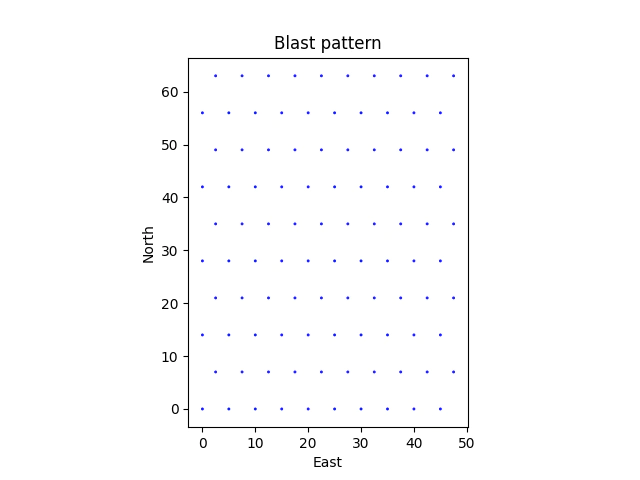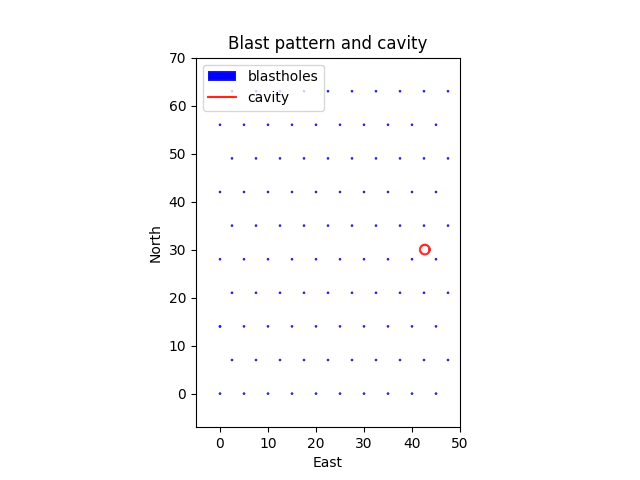MWD cavity detection and background rates Part 2
- 2 minutes read - 398 wordsWecome back,
Before integrating the data we generated in part 1 we are going to estimate the chance of intersecting a cavity on a blast pattern for a series of cavity sizes and blast pattern designs.
To start the demonstration we build a baseline drill pattern of 5x7m with a fixed 0.27m hole diameter that we will keep fixed for all simulations.

Now that we have a grid, we add a cavity of 1m diameter.

In the first instance we see that we didn’t intersect the cavity by any of the blastholes on our trial pattern, but the liklihood of intersecting a cavity is not zero, how would we estimate that chance? We will simulate again to estimate how likely we are to intercept a cavity with a blasthole.
The process is simple here we keep the example blast pattern constant and move the cavity around at random, while monitoring how many times the cavity intersects a blasthole and take a simple average at the end; the gif below demonstrates the process.

The top panel has our static grid of blastholes and a single 1m cavity (red) placed in the blast pattern at random. The solid red circle is the current step in the simulation, the hollow red circles are the last 4 steps. The bottom panel monitors the history of the simulation it tracks:
- the rolling average of how often the cavity intersects a blasthole on the pattern (black) and it’s current value (red circle)
- for each step in the simulation a red dot it placed at 0 or 1 indicating if a cavity was intercepted
Take note of how the black historical trace in the lower panel the initial steps are highly variable and as more steps are accumulated the value starts to stabilise.
To finalise this into something useful I will now run a set of simulations varying both the drill spacing and the cavity size to generate estimates of how often we are going to intercept a cavity with a drill hole in the long run.

Running through each of these scenarios in the plot above we see that they behave as expected with small cavities being essentially undetectable and larger cavities almost always picked up.
We are going to finish this here and integrate this work with the previous analysis in part 1 in the very exciting and upcoming part 3.
Thanks,
Ben.